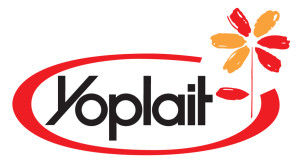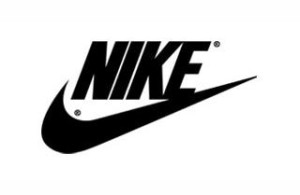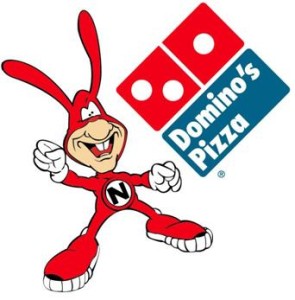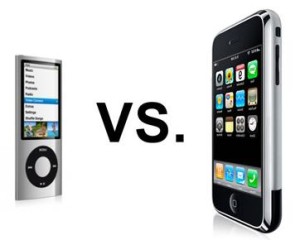How Social Media Can Help Branding
Social media is a great way to help promote a brand because of convenience and connection. Social networks are unlike other marketing platforms because they offer brands an easy access to target audiences, and the ability to maintain online relationships. An online brand profile allows a company to introduce its brand identity, and make the brand more present in consumers’ everyday lives.
The biggest platforms that will help bring the most traffic to a brand are Facebook, Twitter, and Linkedin. Facebook offers a limitless amount of space to promote a brand, with room for wall conversations, updates, photos, video, pictures, interests, and more. Though Twitter and Linkedin are a bit more limiting in what you can share with your audience, they are equally as powerful as Facebook for engaging interaction and forming an online identity.
Consistent updates on Twitter, Facebook, or Linkedin will help flesh out your brand’s profile. Followers can learn about news updates, comment on posts, and offer other insights that may help your brand be the best it can be. The unique quality about social networks is that they build a community and thus a loyalty around your brand, which is valuable for staying relevant and attractive in any industry.
One of the most valuable things social media has to offer a brand is the ability to associate with other brand names online. Partnerships can increase visibility to a wider audience, and leverage a brand into new markets. Alternatively, if a brand targets a specific market or a certain audience, there are niche social media sites to explore. For example, if your brand is a diaper company, it would be advantageous to follow or even start a mommy blog, to get feedback on what mom’s think about your products.
In the past, brands have just been names and logos, but now they trigger online conversations, bringing more life and interaction to a brand’s identity. Not only can you see what consumers say about your brand, but also what they say about competitors. Following a competitor’s profile page can help a brand to monitor the direction of its competitor, and stay up-to-date in the market.
In a brand-centric world, social media can really help a brand distinguish itself and maintain a fresh image. The social media-scape is still new, allowing room to innovate the ways in which it’s being used. We should be seeing some interesting social media initiatives from brands in the near future!
Contributed by: Emily Hassell
The Situation with Celebrity Endorsement

From credit cards to sneakers, it is not uncommon to see celebrities endorsing a brand. The basic idea of an endorsement is pretty simple: People like celebrities. So, if a celebrity says that he or she likes a particular product, then people will like that product too. But what happens when that celebrity endorsing your brand brings negative associations? Celebrity scandal has resulted in contracts being terminated, but recently clothing company Abercrombie & Fitch proposed a new alternative.
Abercrombie has offered to compensate reality star Mike "The Situation" Sorrentino (a character on MTV's The Jersey Shore) to stop wearing A&F products.
"We are deeply concerned that Mr. Sorrentino's association with our brand could cause significant damage to our image," said a statement on the A&F website. "We understand that the show is for entertainment purposes, but believe this association is contrary to the aspirational nature of our brand, and may be distressing to many of our fans."
Initially this sounds ingenious and yes, pretty funny. But it brings into question just how effective celebrity endorsement is. Can celebrities really transfer their popularity--or in this case, notoriety--from themselves to the brands which they endorse ?
A&F is no stranger to controversy. The company's catalogs have caught heat for scantily clad models and, though they were later dropped, partial nudity in A&F display photos led to obscenity charges in 2008 in Virginia. So, given its semi-scandalous past, is The Situation's endorsement really such a situation?
Who is Messing with your Brand?
First, what do I mean by “messing with”? Of course, the term itself implies change and maybe change in an impulsive or irresponsible manner. While altering something as important of an asset as your brand is wildly inappropriate, we have to acknowledge it is happening all the time.
“Messing with” can happen when different people at various exchange points give their own spin to a brand’s strategic positioning. This could be done consciously or unconsciously, and it could happen through an honest lack of knowledge of your brand’s strategic intent or through sheer boredom with repeating the strategy over and over.
Being "messed with" can go way beyond verbal or written contact. It could be accidental or habitual behavior that is inconsistent with or, worse still, misrepresents the brand’s goals, values or critical differentiating attributes.
It could be a lot of little things that erode a brand over a period of time. They can be slow to be detected or a clear philosophical departure from the strategy that a well-design internal study could surface.
But where is this happening?
Well, how thoroughly have you dissected and identified all the touch points customers, prospects and employees have with your brand on a daily basis? Are you truly conscious and attentive to what is happening there?
A short list of possible touch points would include:
- • All possible points of inquiry about your Brand
1. Web site, advertising, PR
2. Referrals, word-of-mouth, social media
• All installation, service or maintenance contact
• All call center exchanges, whether service or billing related
• Written or common usage policies concerning:
1. Exchanges
2. Returns
3. Usage support
• Retail or distributor displays and policies
• Employee assumptions about the brand’s strengths and weaknesses
1. In product development (R&D)
2. In market development (sales)
3. In operations management (manufacturing or backroom support)
In truth, anyone in the company who does not understand the strategy behind your brand can produce a possible negative impact on the brand. It could surface in how they think, make decisions, supply information or interact internally. Ultimately, the finished product or a customer-facing exchange will reflect their assumptions or beliefs.
But whose responsibility is it to tune in?
Tuning into how your brand is represented throughout the organization and at all external purchase or service opportunities should always be a critical part of the entire brand team’s responsibility.
Paying attention to your brand requires a formal, concerted effort that goes well beyond just monitoring comments received in the call center or from your sales force.
These days, social media has created many more points of information and perception exchange that will be immediately and permanently linked to your brand. If executed poorly or haphazardly, your brand is again being “messed with” in a faster, potentially more impactful manner than any others that have come before. So being watchful and capturing this impact should happen on an ongoing and pre-determined basis.
In conclusion, it is important to remember that while many different people can and will interact with your brand all those that are “messing with” it ARE your brand. So be sure you help them represent and protect it, keeping it consistent and true to all you strategically need it to be.
Contributed by: Bev Brandt
Scandals: can they be good for a brand?
That iconic "swoosh" is easily recognized by millions of people around the world as the logo for Nike. Its influence reaches far and its endorsements are many, so it's understandable that devout sports fans (and anyone that watches the news) remembers when Michael Vick lost his Nike endorsement after pleading guilty to dog fighting charges in 2007.
Just one month ago, Nike decided to renew its contract with Vick. The quarterback has had a moderately successful comeback since signing with the Philadelphia Eagles in 2009.
"Michael acknowledges his past mistakes," Nike spokesman Derek Kent told CNBC. "We do not condone those actions, but we support the positive changes he has made to better himself off the field."
Many are upset that Nike may appear to support criminal activity with Vick's contract renewal. This has prompted me to wonder: does disassociating one's brand from a scandal (like Nike did initially) help or hurt a brand?
I believe a brand that disassociates itself from a scandal will flourish or flounder based on how it has already branded itself in the past. If a company has established itself as a smart, successful enterprise, then the public will most likely reference that image and see the disassociation as a tactical move. However, if the company has defined itself as a continuously error-prone brand that dabbles in illicit activities, then the public will see the company as irresponsible for cutting its ties.
Take Disney World, for example. Several people have died on the park's attractions, but is that what you think of when you ride "It's a Small World?" Probably not. Disney is highly adept at branding itself as a provider of wholesome happiness, so it can quickly disregard an issue and move on without a hitch. The public knows that what the Disney brand can offer them outweighs any scandalous slights.
I think Nike ultimately made a wise decision to terminate Vick's contract in 2007. There was a lot of bad blood associated with the controversy, and Nike probably would have received some flak for it. But, if Nike had ridden it out, I think it would not have suffered a devastating blow either. Nike's brand — a profitable, dominant, and powerful sportswear provider — can afford to take a hit. And although many don’t agree with Nike's decision to reinstate Vick, I think we can safely assume that the brand won't be hurting for business anytime soon.
Contributed by Allison Meeks
Avoid the Noid, Round Two
Mascots are generally likeable characters. Familiar faces like Tony the Tiger and Ronald McDonald often hold a nostalgically happy place in the memories of most Americans.
But let's be honest – who ever really liked the Noid?
Domino's Pizza's short-lived, floppy-eared mascot is making a present-day comeback after a retirement that's lasted for 23 years. The popular pizza chain is using the Noid to promote an online game on Facebook, stylized to resemble an arcade game from the 1980s, in which users with the high score can win a free pizza every minute.
Domino's recently garnered a lot of attention for its brutally honest television commercials that aired nationally during the last year and a half, in which the company promised to reinvent itself as a pizza chain. The ads featured consumers openly complaining about the company's pizza products, followed by various Domino's chefs and supervisors who demonstrated how they had improved their pizzas with better ingredients and techniques. The campaign proved successful, as Domino's experienced a historic quarterly gain in the following year.
It's strange, then, that Domino's would revive a long-forgotten mascot at the height of its own revival. The T.V. campaign was successful in re-branding Domino's from a mediocre fast-food restaurant that makes "pizza that tastes like cardboard," into an honest, committed company that goes to great lengths to listen to the concerns of its customers.
So why hearken back to a time where there was no glory – when all Domino's had to distinguish itself as a pizza brand was a cackling little man in a red jumpsuit? After all, the Noid was intended to be an annoying creature that represented other pizza competitors; ironically, it became known as the Domino's mascot instead.
The online promotion is clearly trying to cash in on a blast-from-the-past moment with the 1980s-themed novelties. However, Domino's should think critically about how it wants to brand itself from here onwards. The company has made remarkable strides in less than two years' time in reestablishing itself as a reputable pizza brand, and it needs to continue that momentum instead of interrupting it so abruptly.
One can only hope that, when the promotion is over, the Noid will hop back its way back into the past where it belongs.
Contributed by Allison Meeks
Sibling rivalry: iPods vs. iPhones
My mother is obsessed with her iPhone. While she taps away on her touchscreen all day, she asks me why I don’t trade in my "clearly less superior" iPod nano (5th generation) for Apple's newer flagship device. My typical response is that my iPod is my music device and nothing more, and that's the way I like it, thank you very much.
But then people started using Facebook from their iPhones. Then Angry Birds became popular to play on-the-go. Now, all of my friends have started playing Words with Friends (appropriately).
But me? I'm still here with my iPod. And I'm starting to think my mom has a point.
We are approaching an age of the all-or-nothing device. Phones aren't appealing to consumers unless they can offer Internet access, Skype capabilities, a slew of apps, e-mail, a GPS, video players, and music, just to name a few features. The basic iPod, which is only a music (and sometimes video) player, simply can't compete anymore, and so its brand is suffering a slow demise.
The iPhone, on the other hand, is so adept at meeting every technological need that Apple is willing to let the iPod brand be exceedingly eclipsed by the iPhone brand. Why would Apple invest time and money to revive an increasingly irrelevant iPod brand, when it can minimally advertise the lucrative iPhone and garner massive earnings?
By choosing to essentially leave its iPod brand strategy alone, Apple's sales are starting to reflect iPhone domination. Where iPod sales superseded those of iPhones by $13 million in 2010, that amount shrunk to only a $3 million difference in the first quarter of 2011. If the sales gap diminished that much in just one year, the outlook seems very favorable for iPhones.
The iPod brand's last saving grace could be its highly established brand image. Like it or not, iPhones will always have their roots from the iPod brand, both in name and in likeness – and many people will always refer collectively to the products as "iPod" devices. Even so, it will be difficult for iPods to hold their own in the coming years against their all-encompassing, digital successors.
Contributed by Allison Meeks
3 Ways to Name Your Company
Naming a company is one of the most important and one of the most challenging tasks you may face. The name of your company is the first impression you make – it is what your company stands for, and what it offers. So where do you start? When naming a company there are several approaches you can take. From word combinations to new creations, the verbal branding experts at Addison Whitney compiled a list of three major categories you can use to build a company name.

Current Usage: These are words found in the dictionary
Examples: Quaker, Apple, Target

Hybrid: Two words are fused together to form a new word
Examples: PowerBar, Comcast (from communications and broadcast), Citigroup

Neologism: This is a coined or created word
Examples: Yoplait, Kodak, Kashi
AW Helping Hands: Reedy Creek Park
On July 23, 2011, Addison Whitney participated in another successful Helping Hands volunteer event for Mecklenburg County Park and Recreation at Reedy Creek Park. Reedy Creek Nature Preserve protects 737 acres of natural, forested habitat within Reedy Creek Park. There are over ten miles of hiking trails in the nature preserve for the outdoor enthusiast, giving visitors the opportunity to explore a variety of terrains, while enjoying scenic views of small lakes, forests, fields, streams, and wild life.
Addison Whitney helped to resurface the Nature Center's garden area. Volunteers also installed several hummingbird feeders around the Nature Preserve. Reedy Creek volunteer coordinator, Pepe Chavez commented, "Our garden was in desperate need of some love so we started right away weeding the walk ways resurfacing them with a fresh layer of screening in preparation for Hummingbird Festival; a special event on August 27 that attracts over 2,500 visitors to the nature center making this our biggest special event at Reedy Creek." Additionally, donations provided will cover the cost of slide mats for a nearby playground area.
Despite the rising temperatures in Charlotte on that Saturday morning, all participants left the event with more knowledge of our county's parks and eager to continue giving back to help beautify our parks!
Find Reedy Creek Nature Center on Facebook to find out about other upcoming events!
Contributed by: Cathleen Foley
[portfolio_slideshow]
The Future of Angry Birds

I told myself I wouldn’t get addicted to Angry Birds. But as soon as I demolished those squealing, snorting little pig targets, I knew I was hooked.
I'm not alone in my obsession; there are over 100 million users who play Angry Birds monthly. The game clearly has a loyal following, and has become a staple in American pop culture.
Rovio, the Finnish company who created the game, recently announced plans to take Angry Birds to the Chinese market. The company wants to increase brand awareness with a lofty goal – to become the first global entertainment brand with more than one billion fans.
Instead of creating new games and expanding the master brand's umbrella, however, Rovio wants to capitalize on Angry Birds alone. Game-themed plush toys, cookbooks, and even merchandise stores are in the works.
"We are betting everything on Angry Birds," Rovio CEO Peter Vesterbacka said unabashedly at the Casual Connect game show in Seattle.
Rovio is depending on Angry Birds' unusually expedient success to carry the company far. According to the aforementioned article, Angry Birds is the third most-pirated brand in China after Disney and Hello Kitty — a remarkable feat, given the game is less than two years old. Even more astonishing is that the game has grown faster than any other technological brand in history in terms of active users, according to Rovio's research data.
These impressive statistics, coupled with Angry Birds' addictive and quirky brand personality, make for a promising run in China. If the game is already raking in the kind of demand seen for massive, established brands like Disney and Hello Kitty, it’s effectively conveying a brand image of desirability and high regard.
But is Rovio, as a brand, being overshadowed by the Angry Birds brand itself? The company claims it wants a billion fans as an entertainment brand — but people may only become fans of Angry Birds, and not of Rovio, its creator. It will be interesting to see if Rovio's tactics will help the company’s brand gain prominence on its own as a gaming innovator, or if it will be always be eclipsed by the Angry Birds game.
Regardless, it's clear that reaching a wider audience of people is vital to Rovio's strategy.
"It’s not all about monetization now," Vesterbacka said. "It’s about keeping the fans coming back and building the brand."
Contributed by Allison Meeks
More than Just Java: Starbucks Follow-Up

From new sizes to a new logo, the Starbucks brand has seen many changes in the last year. Following the introduction of wine and beer to its menu options, Starbucks has also extended its food offerings.
Starbucks is introducing a line of " bistro boxes," in snack and entree sizes, priced from $4.95 to $6.95 and all under 500 calories. The initial entrees are chipotle chicken wraps, sesame noodles, chicken lettuce wraps and salumi and cheese. The new menu items reflect a ramped-up emphasis on food at Starbucks, which has generally focused on breakfast sandwiches and pastries.
From booze to bistro boxes, Starbucks has moved far beyond the classic cup of joe. The Starbucks brand started with a focus on coffee. Baristas were trained in coffee knowledge and served high quality coffee due the strict control over the quality and processing of the beans. Aroma, atmosphere, flavor and store design stimulated all five senses and contributed to an overall "Starbucks Experience."
Though food items are nothing new, previously served pastries acted as complements to the coffee. As the menu at Starbucks keeps growing, edible items are standing out on their own. I don't want to wash down my chipotle chicken with a vanilla latte. Add other innovations such as books and music to the mix and it's no surprise Starbucks dropped the word "coffee" from its name and logo.
New ideas and expanded menus don't appear to be a problem for Starbucks loyalists. With corporate restructuring plans in place and new stores opening in India and Vietnam, expansion of the Starbucks brand doesn't seem to be slowing any time soon.



